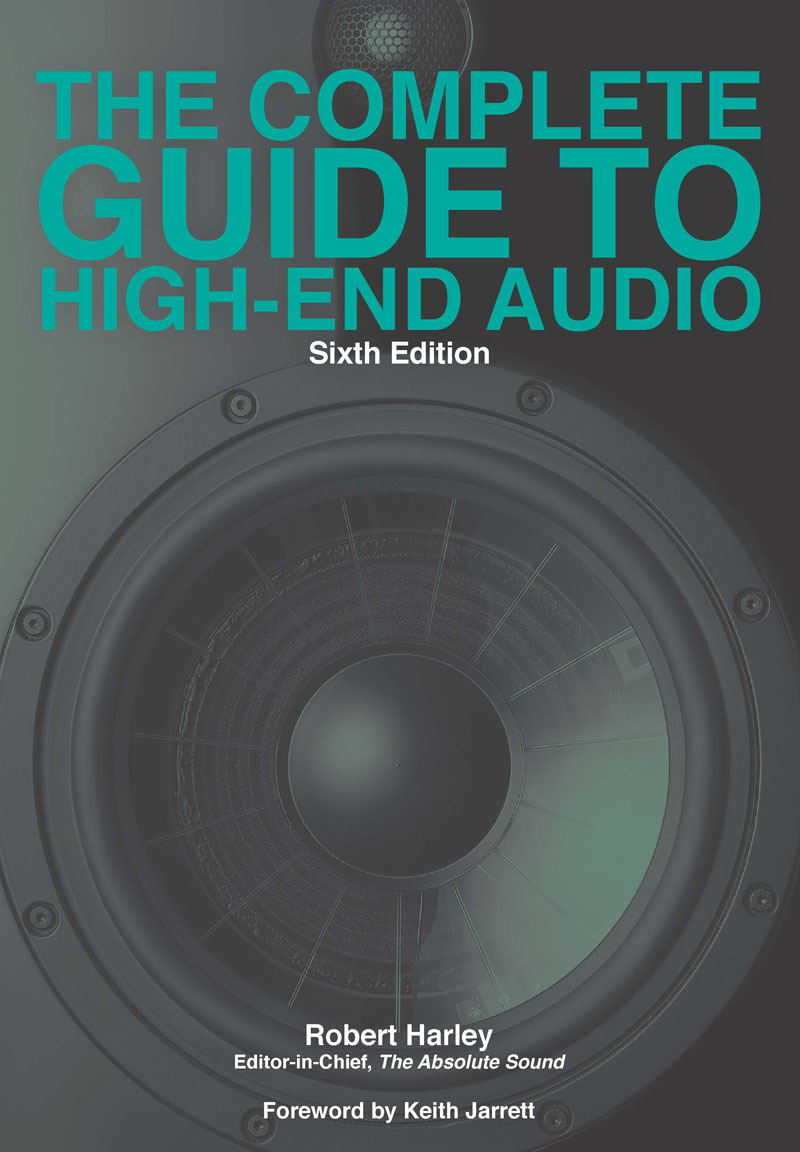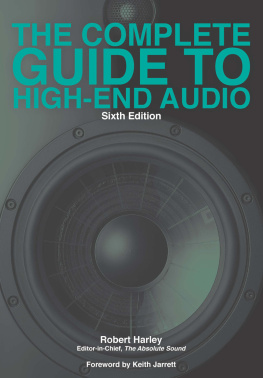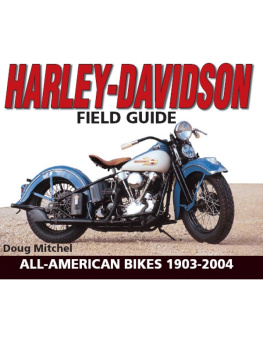Robert Harley - The Complete Guide to High-End Audio
Here you can read online Robert Harley - The Complete Guide to High-End Audio full text of the book (entire story) in english for free. Download pdf and epub, get meaning, cover and reviews about this ebook. year: 2021, publisher: Acapella Publishing, genre: Home and family. Description of the work, (preface) as well as reviews are available. Best literature library LitArk.com created for fans of good reading and offers a wide selection of genres:
Romance novel
Science fiction
Adventure
Detective
Science
History
Home and family
Prose
Art
Politics
Computer
Non-fiction
Religion
Business
Children
Humor
Choose a favorite category and find really read worthwhile books. Enjoy immersion in the world of imagination, feel the emotions of the characters or learn something new for yourself, make an fascinating discovery.
- Book:The Complete Guide to High-End Audio
- Author:
- Publisher:Acapella Publishing
- Genre:
- Year:2021
- Rating:4 / 5
- Favourites:Add to favourites
- Your mark:
- 80
- 1
- 2
- 3
- 4
- 5
The Complete Guide to High-End Audio: summary, description and annotation
We offer to read an annotation, description, summary or preface (depends on what the author of the book "The Complete Guide to High-End Audio" wrote himself). If you haven't found the necessary information about the book — write in the comments, we will try to find it.
The Complete Guide to High-End Audio — read online for free the complete book (whole text) full work
Below is the text of the book, divided by pages. System saving the place of the last page read, allows you to conveniently read the book "The Complete Guide to High-End Audio" online for free, without having to search again every time where you left off. Put a bookmark, and you can go to the page where you finished reading at any time.
Font size:
Interval:
Bookmark:


Copyright 19942021 by Robert Harley
Sixth Edition
First Printing2021
All rights reserved. No part of this publication may be reproduced or transmitted in any form or by any means, electronic or mechanical, including photocopying, recording, or by any information storage and retrieval system without written permission from the publisher, except for the inclusion of brief quotations in a review.
International Standard Book Number:
978-1-7362545-0-9
Production: October Custom Publishing
Cover Concept and Design: Torquil Dewar
Layout: Shelley Lai
Printed in the United States of America
Trademark Notice
This book comments on and describes various audio and video components. Many such products are identified by their tradenames. In most cases, these designations are claimed as legally protected trademarks by the companies manufacturing the products. Use of a term in this book should not be regarded as affecting the validity of any trademark or service mark. You should investigate a claimed trademark before using it for any purpose other than to refer to the product.
Warning Disclaimer
This book is designed to provide the most current, correct, and clearly expressed information regarding the subject matter covered. It is sold with the understanding that the publisher and author are not engaged in rendering audio/video system design.
It is not the purpose of this guide to reprint all the information otherwise available to the author and/or publisher, but to complement, amplify, and supplement other texts. You are urged to read all available material and learn as much as possible about audio, video, and home theater to tailor the information to your individual needs. For more information, readers are encouraged to consult with professional specialty audio and video retailers or manufacturers for information concerning specific matters before making any decision.
Every effort has been made to make this guide as complete and accurate as possible. However, there may be mistakes both typographical and in content. Therefore, this text should be used as a general guide and not as the ultimate source of audio and video information. Furthermore, this text contains information current only up to the printing date.
The purpose of this guide is to educate and entertain. The author and Acapella Publishing shall have neither liability nor responsibility to any person or entity with respect to any loss or damage caused, or alleged to be caused, directly or indirectly by the information contained in this book.
If you do not wish to be bound by the above, you may return this book to the place of purchase for a full refund.
By Keith Jarrett
M usic is the sonic motion of intention. With words, sound can be divorced from meaning by taking away the physical quality of speech. But musics meaning is in its physical quality: its sound. When a musician plays something a certain way and we cant hear the intent (the reason) behind it, we are hearing wasted motion, and register it as such because we havent been given enough clues about the intent. We can then grow to think that everything is only gesture, and miss the real thing.
The media through which we hear music (our systems, rooms, etc.) cannot be separated from our ability to experience the music. It isnt the same music on a different system because we cannot separate musics rhetoric (its words) from its physical reality (its delivery). This makes the delivery systems (our stereos) more important than we might think they are. Can they tell us what the musicians on the recording are telling us?
As a musician, I oftentoo oftenhad the following experience: I would play a concert, hear the tape afterward, and wonder what was missing. I would remember incredible things in the concert that just werent on the tape. The notes were there, but notes are not music. Where was the music, the intention?
We could think of it this way: On the tape, the rhetoric had no meaning. Had I trusted the tape and not my memory of the actual event, I would have never grown to understand that, even though the sound is on tape, it doesnt mean youve recorded the music. If youve heard a certain CD on a certain system, it doesnt necessarily mean that youve heard whats on the CD. We must learn to trust the responses of our own systemour earsto music systems. Of course, this demands that we be in touch with ourselvesno easy thing.
People to whom music is important need to get close to the intention in a recording, and theres only one way to do this in the home: learn about the world of audio equipment. Use your (and others) ears to help remove whatever hinders you from the musical experience on the recording. Of course, its not only the reproduction side that needs carebut thats the only side the listener has control over.
For instance, its demonstrable that by merely flipping a two-pronged AC plug on a CD player, or even a turntable, a record you thought you didnt like can become a favoritejust because the polarity was wrong. Since music cannot be divorced from its emotional content, the sound of a record can determine whether you think you like the music. And vice versa, when you cant listen to music you really think you like because of how it was recorded.
Obviously, the musical experience is a delicate, complex thing, and we humans are more sensitive than we sometimes think. But we have the option to tune our music systems to better balance the equation. We can get closer to what we want if we know what we want.
There are stereo components that approximate the musical experience at many different price levels. We all know what our financial limitations are; but, given the desire to improve our systems, we can do it.
It by no means follows that musicians have to be audiophiles. Though Ive been recording since 1965, I didnt seriously think about much of this until the mid-1980s. But audiophiles and music lovers push the envelope, and we all benefit. Also, the more serious audiophiles are determined to keep their minds and ears open, keep learning, and try to remain patient during the process. Doing this thing right can take time.
There are a lot of people out there listening to all of these components for us. I recommend using this fact, and carefully reading others evaluations, until you can tell whether a reviewers preferences in sound match your own priorities. You can sort of get to know these guys over a period of time.
But, of course, its your ears that count. I think you should pay attention to their needs. After all, were talking nutrition in an age of diet soft drinks.
E ach time I revise and update this book, Im made vividly aware of the technological changes that shape the ways in which we enjoy music. Although the fifth edition was published six years ago, that short span of time has seen more profound changes in audio technologytransformative developments that open startling new possibilities for accessing musicthan in any previous decade.
The new technologies that most readily come to mind are music servers, high-resolution streaming audio and downloads, and network-connected audio products. These technologies give me the ability to instantly access just about any piece of music I can think of, much of it with outstanding sound qualityfar better than CD. Its like living in a virtually infinite music store. In my main audio system, a network-connected music server holds a growing collection of high-resolution downloads along with most of my CD collection, plus easy access to high-res streaming services Tidal and Qobuz, all accessible with a few finger-taps on a tablet. And when I travel, I can take high-res music with me, and listen to it through planar-magnetic headphones whose sound quality rivals that of six-figure loudspeakers. Never in history has so much music been so readily available to so many listeners.
Next pageFont size:
Interval:
Bookmark:
Similar books «The Complete Guide to High-End Audio»
Look at similar books to The Complete Guide to High-End Audio. We have selected literature similar in name and meaning in the hope of providing readers with more options to find new, interesting, not yet read works.
Discussion, reviews of the book The Complete Guide to High-End Audio and just readers' own opinions. Leave your comments, write what you think about the work, its meaning or the main characters. Specify what exactly you liked and what you didn't like, and why you think so.











